How to Grow Tomatoes in Pots
Don’t have space for a veggie garden? All you need is a sunny spot and a large container to grow this favourite crop
Lauren Dunec Hoang
20 August 2019
Houzz Editor; landscape designer and former garden editor for Sunset Magazine and in-house designer for Sunset's Editorial Test Garden. Her garden designs have been featured in the Sunset Western Garden Book of Landscaping, Sunset Western Garden Book of Easy-Care Plantings (cover), Inhabitat, and POPSUGAR.
Houzz Editor; landscape designer and former garden editor for Sunset Magazine and... More
Tomatoes are one of the most rewarding edible plants to grow yourself, as their flavour is so much better than what you typically find at the grocery store. Plus, there are all the fun varieties to choose from. Don’t worry if your outdoor space is limited. All you need to grow your own tomato plant is a good-size container and a sunny spot outdoors or on a balcony.
Plant tomatoes in warm weather, and you’ll soon be enjoying the fruits of your labour. Here’s what you need to know about growing tomatoes in pots.
Plant tomatoes in warm weather, and you’ll soon be enjoying the fruits of your labour. Here’s what you need to know about growing tomatoes in pots.
1. Pick a sunny spot
Tomato plants thrive – and produce more tomatoes – when they’re in a spot that receives at least six hours, but better yet eight hours, of direct sunlight. This applies to growing tomatoes in pots or in the ground.
It’s easy to overestimate how much sun a spot in your garden or on your balcony receives. To gauge whether it’s a good spot for growing a tomato, head outside in the morning, midday and afternoon, and see how much sun an area receives. Shoot for six to eight hours of direct sun.
Although daylight hours increase in the summer, the path the sun makes through the sky also changes, creating slightly different sun and shade patterns in your yard. If you’re growing tomatoes in a walled courtyard or in your balcony, you may need to adjust the position of your potted tomatoes as the season goes on in order to maximise sun.
Tomato plants thrive – and produce more tomatoes – when they’re in a spot that receives at least six hours, but better yet eight hours, of direct sunlight. This applies to growing tomatoes in pots or in the ground.
It’s easy to overestimate how much sun a spot in your garden or on your balcony receives. To gauge whether it’s a good spot for growing a tomato, head outside in the morning, midday and afternoon, and see how much sun an area receives. Shoot for six to eight hours of direct sun.
Although daylight hours increase in the summer, the path the sun makes through the sky also changes, creating slightly different sun and shade patterns in your yard. If you’re growing tomatoes in a walled courtyard or in your balcony, you may need to adjust the position of your potted tomatoes as the season goes on in order to maximise sun.
2. Choose a large container
In general, you want to choose the largest container you can get your hands on. Tomatoes grow on giant, rambling, shrubby vines and need enough soil to support their growth. Plus, larger containers with deeper soil reservoirs are slower to dry out, giving you more of a buffer with your watering.
Select a container that has a soil depth of at least 24 centimetres – ideally with more than 60 centimetres of soil – or a total soil volume of about 75 litres. Galvanised-metal water troughs can make excellent vessels for growing tomatoes, as do wine barrels. As with any container, make sure there are drainage holes before planting, and drill them yourself if necessary.
Tip: When using metal containers, including feed troughs, avoid placing them in baking-heat settings or on asphalt, which can cause roots to burn.
Find garden supplies near you
In general, you want to choose the largest container you can get your hands on. Tomatoes grow on giant, rambling, shrubby vines and need enough soil to support their growth. Plus, larger containers with deeper soil reservoirs are slower to dry out, giving you more of a buffer with your watering.
Select a container that has a soil depth of at least 24 centimetres – ideally with more than 60 centimetres of soil – or a total soil volume of about 75 litres. Galvanised-metal water troughs can make excellent vessels for growing tomatoes, as do wine barrels. As with any container, make sure there are drainage holes before planting, and drill them yourself if necessary.
Tip: When using metal containers, including feed troughs, avoid placing them in baking-heat settings or on asphalt, which can cause roots to burn.
Find garden supplies near you
You can get away with a slightly smaller pot if you choose a determinate tomato variety, which stops growing at a certain height. Determinate tomatoes form smaller, bushier plants than indeterminate varieties, so need less soil and less staking to support their growth.
Many tomatoes, including most heirlooms, are indeterminate and keep growing, reaching 1.8 metres or taller. For indeterminate tomatoes, choose the largest pots you can find. If you’re planting multiple tomatoes in pots, leave space between containers to help with air circulation.
Tip: Different tomato varieties require different spacing, so consult the seed packet or tag on your tomato plant for information.
Many tomatoes, including most heirlooms, are indeterminate and keep growing, reaching 1.8 metres or taller. For indeterminate tomatoes, choose the largest pots you can find. If you’re planting multiple tomatoes in pots, leave space between containers to help with air circulation.
Tip: Different tomato varieties require different spacing, so consult the seed packet or tag on your tomato plant for information.
If you’re growing tomatoes from seed, start the seeds in seed trays. Pot up the seedlings in small containers, like the ones pictured here (make sure your pots have drainage holes), then transplant them to a larger container when they reach about 10 to 15 centimetres tall.
3. Plant your tomatoes deep
Select your container and place it in the sunny spot you’ve chosen.
Fill roughly the bottom half of the container with fresh potting mix and any soil amendments you’d like, such as compost, kelp meal, bone meal or slow-release fertiliser pellets.
Then place your tomato seedling on the centre of the mound of potting mix. Adjust the height of the potting mix so only two sets of two leaves on your tomato plant will be exposed above the soil level once the pot is filled to the top.
Select your container and place it in the sunny spot you’ve chosen.
Fill roughly the bottom half of the container with fresh potting mix and any soil amendments you’d like, such as compost, kelp meal, bone meal or slow-release fertiliser pellets.
Then place your tomato seedling on the centre of the mound of potting mix. Adjust the height of the potting mix so only two sets of two leaves on your tomato plant will be exposed above the soil level once the pot is filled to the top.
This technique (called deep planting) triggers the plant to form roots along the stem below the soil level, promoting a strong, healthy root system for the tomato plant. A system of healthy roots equals stronger plants and more tomatoes.
Once you have the height of the seedling set, backfill the container with fresh potting mix, leaving two sets of two leaves exposed above the soil level. Water in well after planting with a seaweed solution.
Once you have the height of the seedling set, backfill the container with fresh potting mix, leaving two sets of two leaves exposed above the soil level. Water in well after planting with a seaweed solution.
4. Add a growing support
Almost all tomato plants need support to grow – with the exception of small determinate or bush varieties. Although your just-planted baby tomato plant doesn’t look as if it will need staking anytime soon, get your support in place now in order to avoid trying to wrestle a full-grown tomato plant into a cage later.
If you’re using bamboo or other wooden stakes, put one stake in the soil at the centre of the plant and an optional three or four stakes around the edges of the pot to help support future lateral branches. Later on, you can loop string around the outer stakes to form a loose cage.
If you’ve purchased tomato cages, get them in place now with the tomato plant at the centre. Plant ties can be useful for fastening the main stem and thick lateral branches to whatever type of trellis you’ve chosen to use.
Almost all tomato plants need support to grow – with the exception of small determinate or bush varieties. Although your just-planted baby tomato plant doesn’t look as if it will need staking anytime soon, get your support in place now in order to avoid trying to wrestle a full-grown tomato plant into a cage later.
If you’re using bamboo or other wooden stakes, put one stake in the soil at the centre of the plant and an optional three or four stakes around the edges of the pot to help support future lateral branches. Later on, you can loop string around the outer stakes to form a loose cage.
If you’ve purchased tomato cages, get them in place now with the tomato plant at the centre. Plant ties can be useful for fastening the main stem and thick lateral branches to whatever type of trellis you’ve chosen to use.
5. Water regularly
Regular, consistent water is the key to keeping container-grown tomatoes happy. Water about twice a week (or more where summers are hot and dry), aiming to keep the soil consistently moist but not too wet. Too little water will produce weak and unhealthy plants that are more susceptible to diseases. Too much water can cause the roots to rot and the tomatoes to split.
Avoid getting water on the plant’s leaves, which can lead to tomato blight and fungus. Setting up a drip-irrigation system is the easiest way to make sure your tomato plants get the consistent moisture they need – and will put your mind at ease if you go away for a week.
Regular, consistent water is the key to keeping container-grown tomatoes happy. Water about twice a week (or more where summers are hot and dry), aiming to keep the soil consistently moist but not too wet. Too little water will produce weak and unhealthy plants that are more susceptible to diseases. Too much water can cause the roots to rot and the tomatoes to split.
Avoid getting water on the plant’s leaves, which can lead to tomato blight and fungus. Setting up a drip-irrigation system is the easiest way to make sure your tomato plants get the consistent moisture they need – and will put your mind at ease if you go away for a week.
6. Fertilise plants
Tomato plants are moderate feeders. Since containers have limited soil and nutrient reserves, plan to fertilise tomatoes about once every other week during the early growing period, then taper off once tomatoes begin to ripen.
Use a well-balanced fertiliser formulated for tomatoes and other summer crops (organic fish emulsion is great if you don’t mind the smell). Avoid high-nitrogen fertilisers that can promote thick stalk and leaf growth, rather than signalling to plants to set tomatoes.
Tomato plants are moderate feeders. Since containers have limited soil and nutrient reserves, plan to fertilise tomatoes about once every other week during the early growing period, then taper off once tomatoes begin to ripen.
Use a well-balanced fertiliser formulated for tomatoes and other summer crops (organic fish emulsion is great if you don’t mind the smell). Avoid high-nitrogen fertilisers that can promote thick stalk and leaf growth, rather than signalling to plants to set tomatoes.
Three common mistakes when growing tomatoes in pots
1. Using containers that are too small
Starting with an itty-bitty pot is probably the most common trap for those new to growing tomatoes in containers. Are your plants wilting too quickly? The container is too small. Do plants look sickly and nutrient-deprived? Most likely the container is too small. Are your plants not setting many tomatoes? Make sure the container isn’t too small. Sure, it’s often a combination of factors, but starting off with a large container is your best chance of success.
1. Using containers that are too small
Starting with an itty-bitty pot is probably the most common trap for those new to growing tomatoes in containers. Are your plants wilting too quickly? The container is too small. Do plants look sickly and nutrient-deprived? Most likely the container is too small. Are your plants not setting many tomatoes? Make sure the container isn’t too small. Sure, it’s often a combination of factors, but starting off with a large container is your best chance of success.
2. Not watering enough
Containers placed in full sun can dry out quickly. Add a water-hungry plant like a tomato into the container, and you have two forces pulling water from the pot. Planting tomatoes in pots isn’t the time to try out ‘dry farming’ (intentionally starving a plant of water to form flavour-intensive fruit).
In containers, aim to keep the plant as healthy as possible. Start with a large container, which will dry out more slowly, and set up a regular watering system to keep plants happy.
Containers placed in full sun can dry out quickly. Add a water-hungry plant like a tomato into the container, and you have two forces pulling water from the pot. Planting tomatoes in pots isn’t the time to try out ‘dry farming’ (intentionally starving a plant of water to form flavour-intensive fruit).
In containers, aim to keep the plant as healthy as possible. Start with a large container, which will dry out more slowly, and set up a regular watering system to keep plants happy.
3. Not choosing a spot with enough sun
Tomatoes like sun, sun and more sun. If your tomato plant looks leggy or isn’t properly setting tomatoes, try moving the container to a spot where it will receive six to eight hours of direct sun.
Tell us
Do you have any green-thumb tips for growing tomatoes in pots? Tell us in the Comments below, like and save this story, and join the conversation.
More
Hello, Potters: Container Plants for the Tropics
Hello, Potters: More Container Plants for the Tropics
Tomatoes like sun, sun and more sun. If your tomato plant looks leggy or isn’t properly setting tomatoes, try moving the container to a spot where it will receive six to eight hours of direct sun.
Tell us
Do you have any green-thumb tips for growing tomatoes in pots? Tell us in the Comments below, like and save this story, and join the conversation.
More
Hello, Potters: Container Plants for the Tropics
Hello, Potters: More Container Plants for the Tropics
Related Stories
Gardens & Landscaping
Hello, Potters: Container Plants for the Tropics
By Karla Rey
In this two-part series we present plants that you can grow in pots to provide screening and even cleaner air
Full Story
Most Popular
What Plants to Choose for Your Balcony Garden
Find out what you need to consider when choosing plants for your balcony, as well as a few leafy suggestions
Full Story
Gardens & Landscaping
10 Positively Great Display Ideas for Your Houseplants
Check out these ways to make a bigger impact with your indoor potted displays
Full Story
Urban Planting
Savoury Six: Herbs to Jump-Start Your Edible Garden
By Karla Rey
Begin with these evergreen herbs that are surprisingly low-maintenance
Full Story
Gardens & Landscaping
7 Plants for Prosperity
By Karla Rey
These low-maintenance greens are said to attract that other kind of green (good luck and prosperity)
Full Story
Bathroom Ideas
9 Potted Plants to Refresh Your Bathroom
By Karla Rey
Looking for ways to refresh your bathroom? Here are pretty and practical plants to do just that
Full Story
Lifestyle
Baker's Delights: Plant Ideas for Bakers and Cooks
By Karla Rey
Our resident landscape expert and vegetarian cookbook author lists easy, kitchen-friendly herbs and edible flowers
Full Story
Gardens & Landscaping
5 Ways to Tell How Much Water Your Indoor Plants Really Need
Not too much, not too little – learn the right amount of water to give your indoor plants
Full Story
Gardens & Landscaping
An Architect Reveals: 5 Reasons You Need a Green Wall
By John Lea
Short on space but want to bring a touch of nature into your home? A vertical garden could be the solution
Full Story
Gardens & Landscaping
Readers Ask: How to Care for the Fiddle Leaf Fig?
By Karla Rey
You just got yourself a fiddle leaf fig. Now, how do you help it thrive?
Full Story


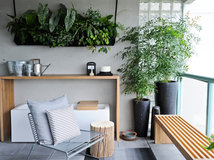
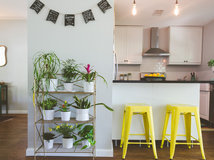

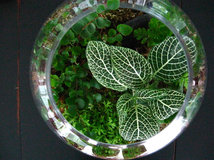
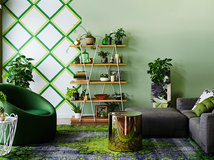
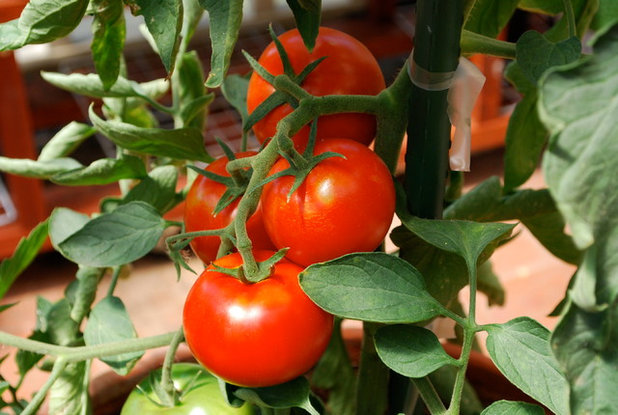
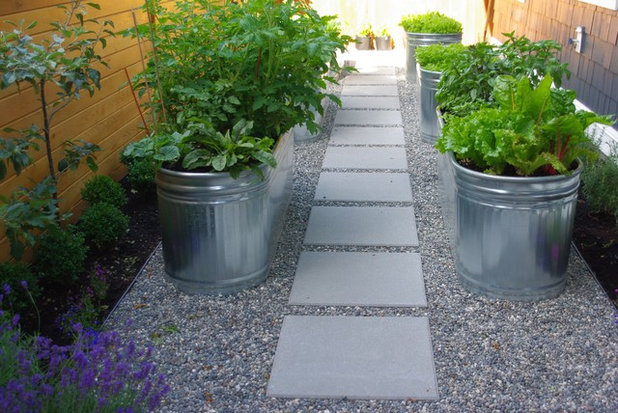
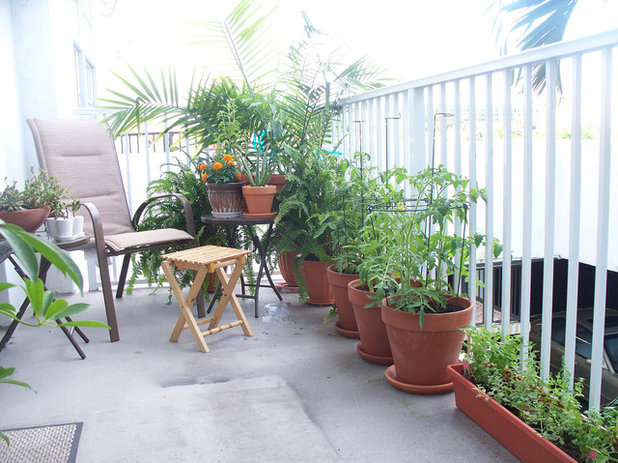
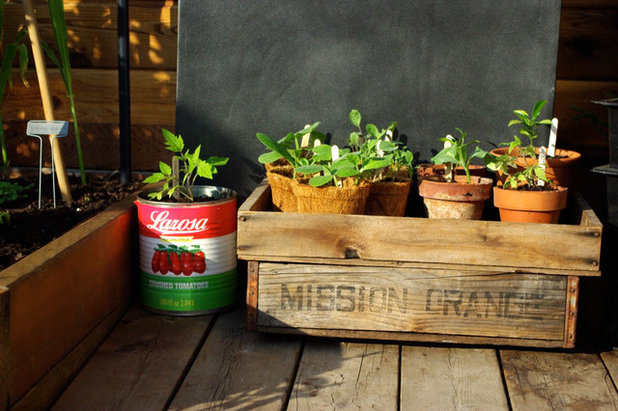
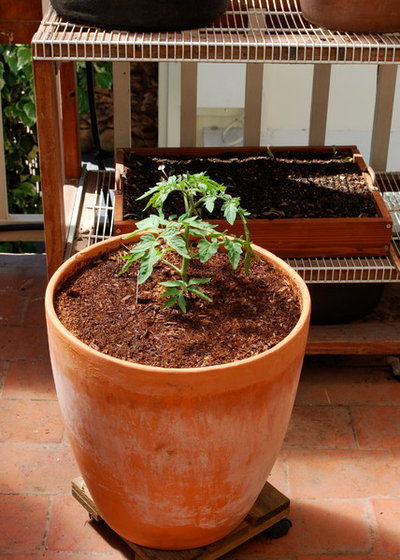
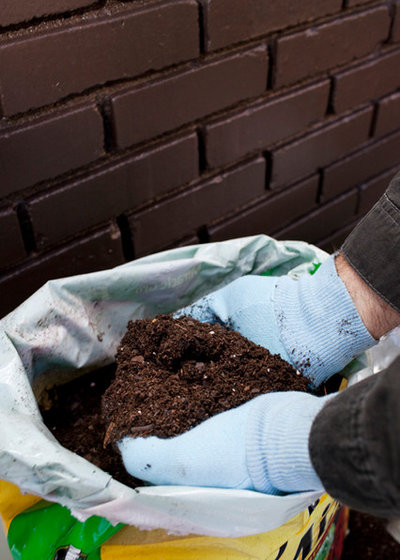
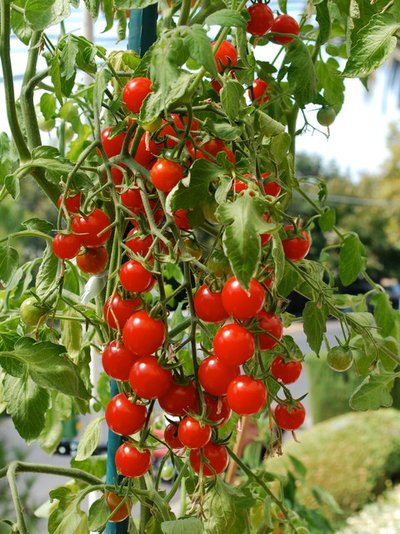
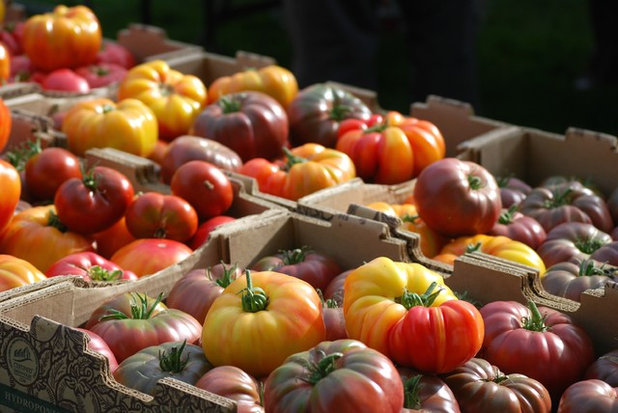
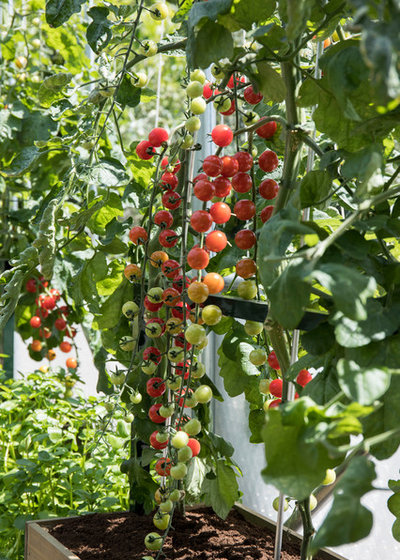
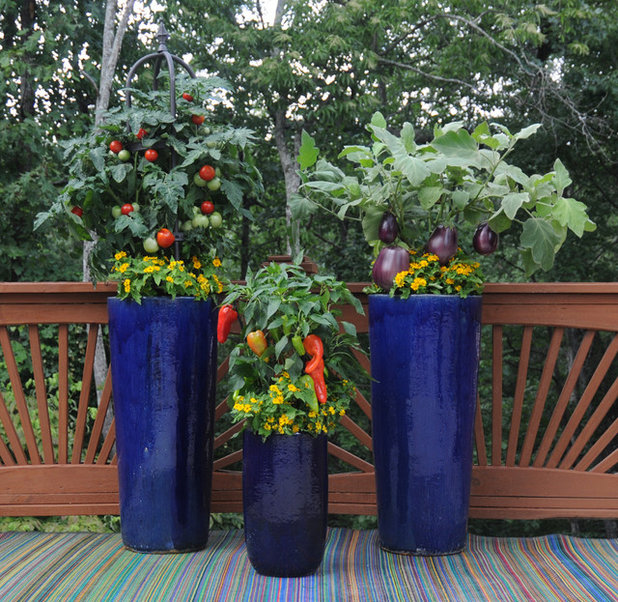
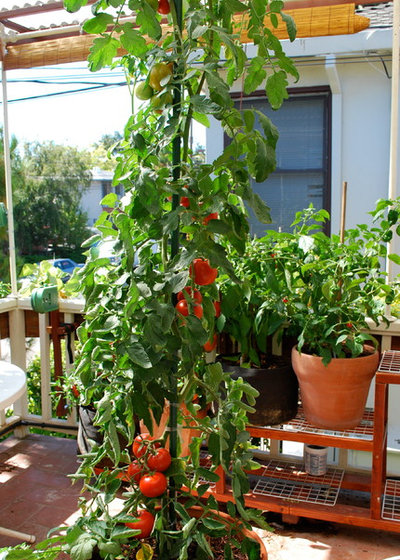
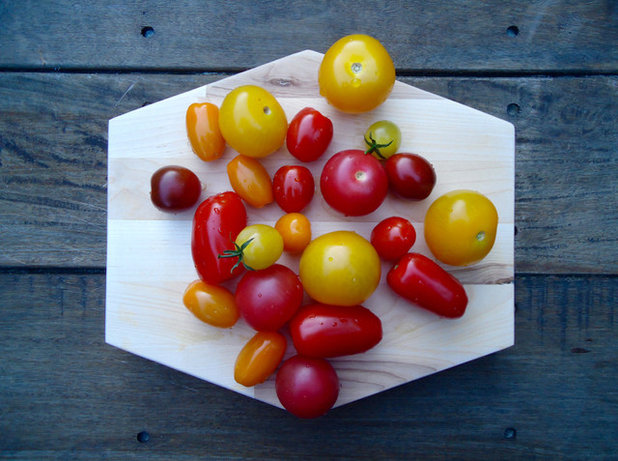


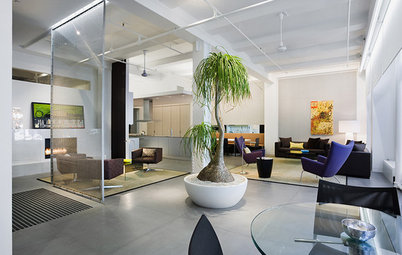
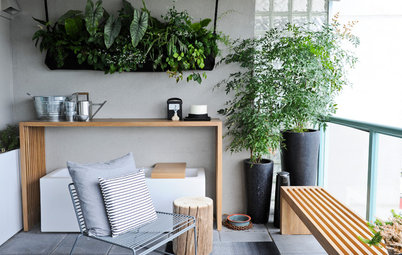
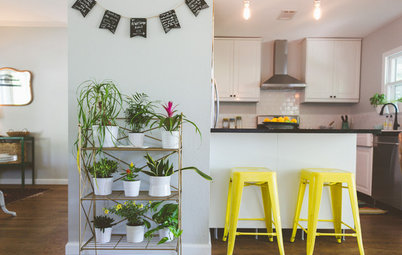
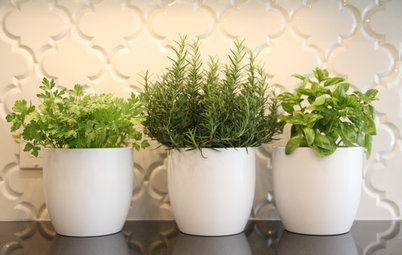
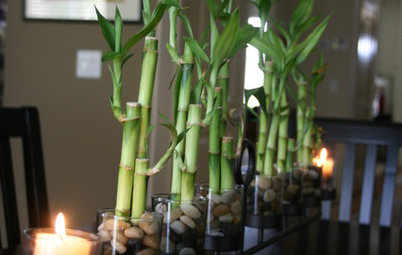
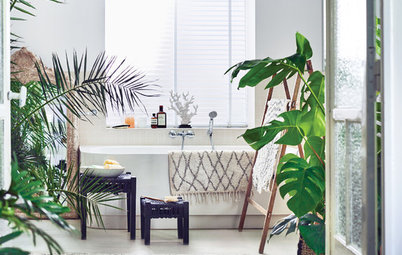
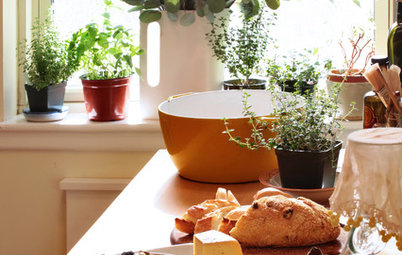
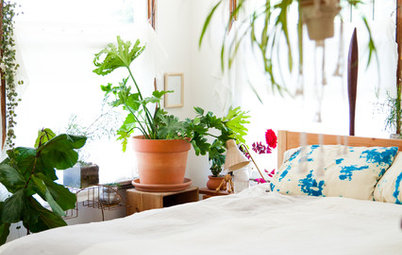
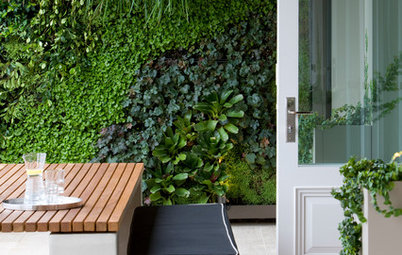
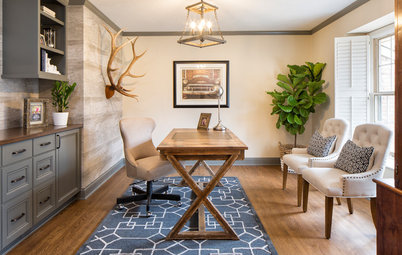
Hiw often do you need to replace the potting mix when you grow tomatoes in a
I wonder if the Irish Spring soap would deter the squirrels in my tomatoes. I am about to give up altogether. Every year I spend a lot of money on tomato plants, soil, and the pots and supports were an investment as well. This year I got 5 cherry tomatoes for myself. Some little brown furry guy must have been momentarily inattentive. I don't mind sharing but I am getting none whatsoever. You can buy such good ones now. I live in the city with a fence and don't have a deer problem. I do have rabbits as well though. Most years they eat the pansies to a nub. This year they have not.So now I'm worried about them.
The critters usually want water, put out a pan of it and see if they leave your tomatoes alone. Also hair from your brush is an option.